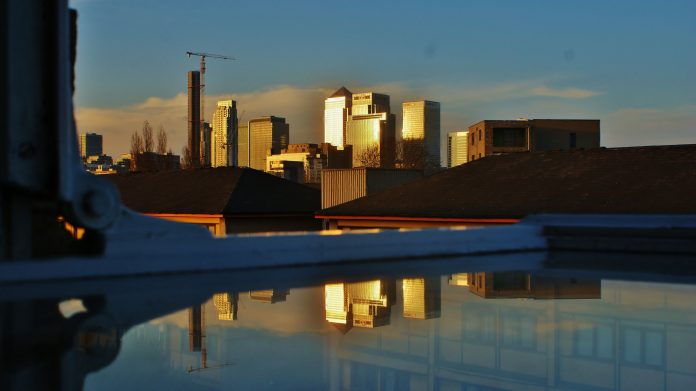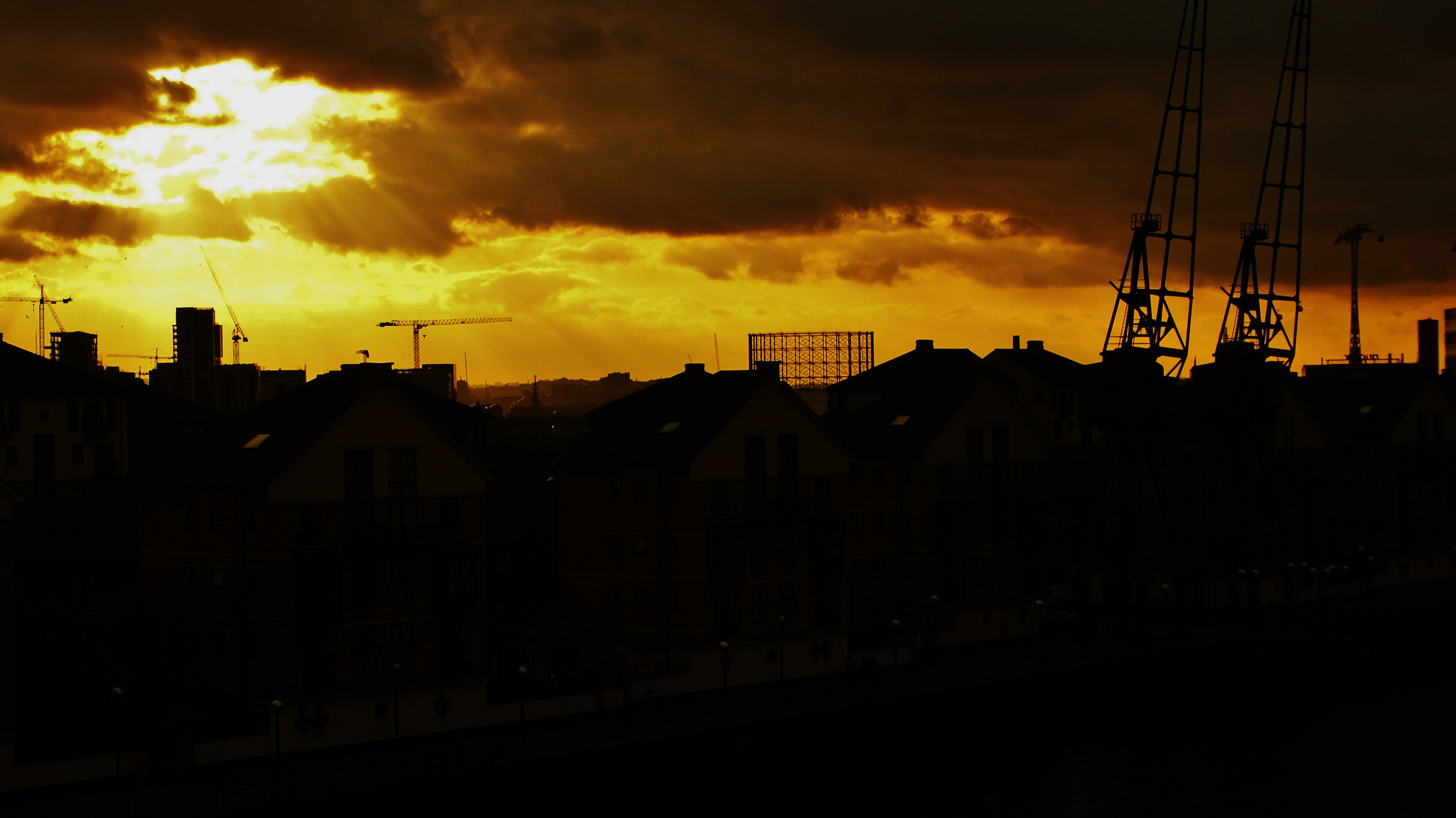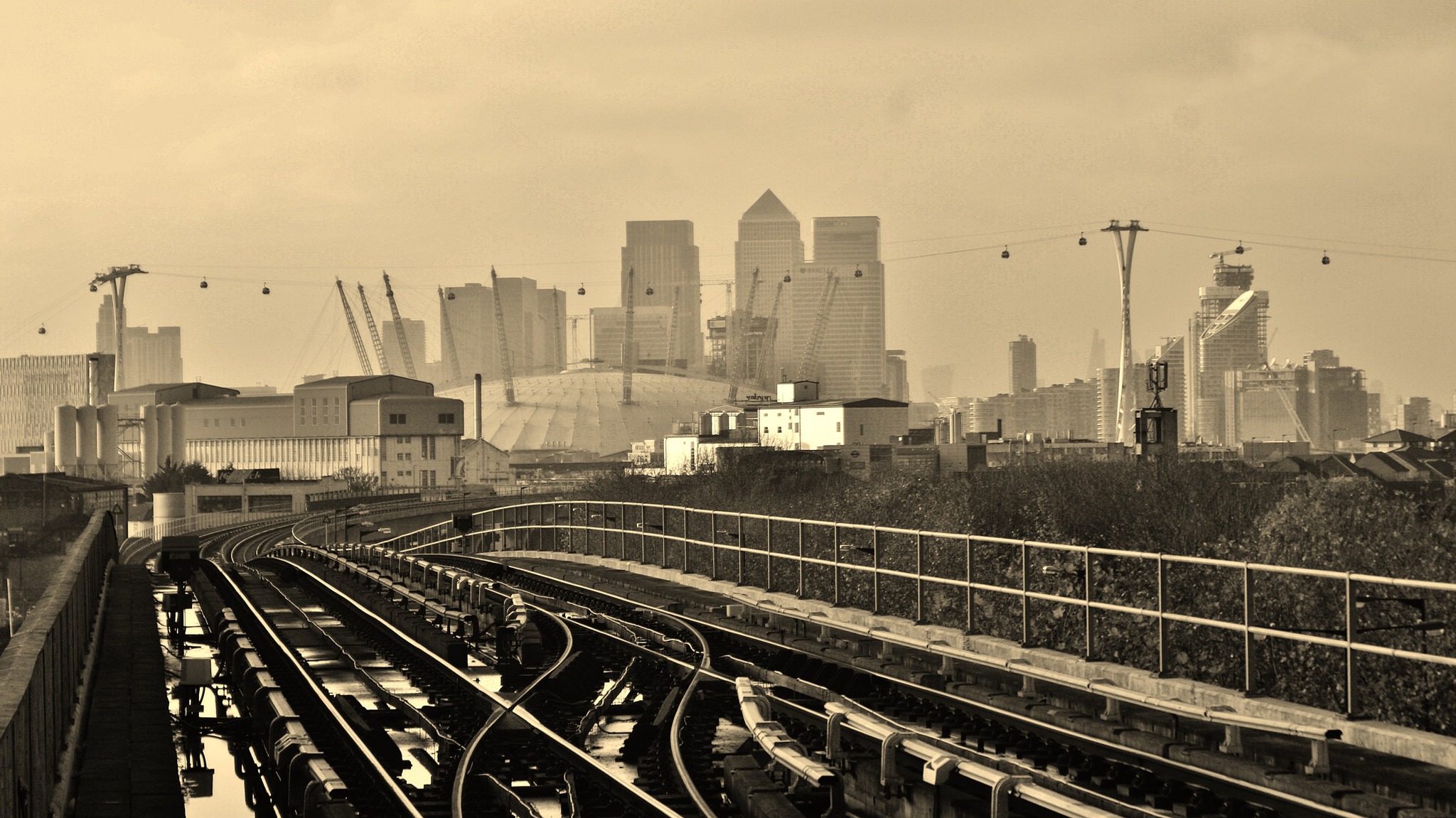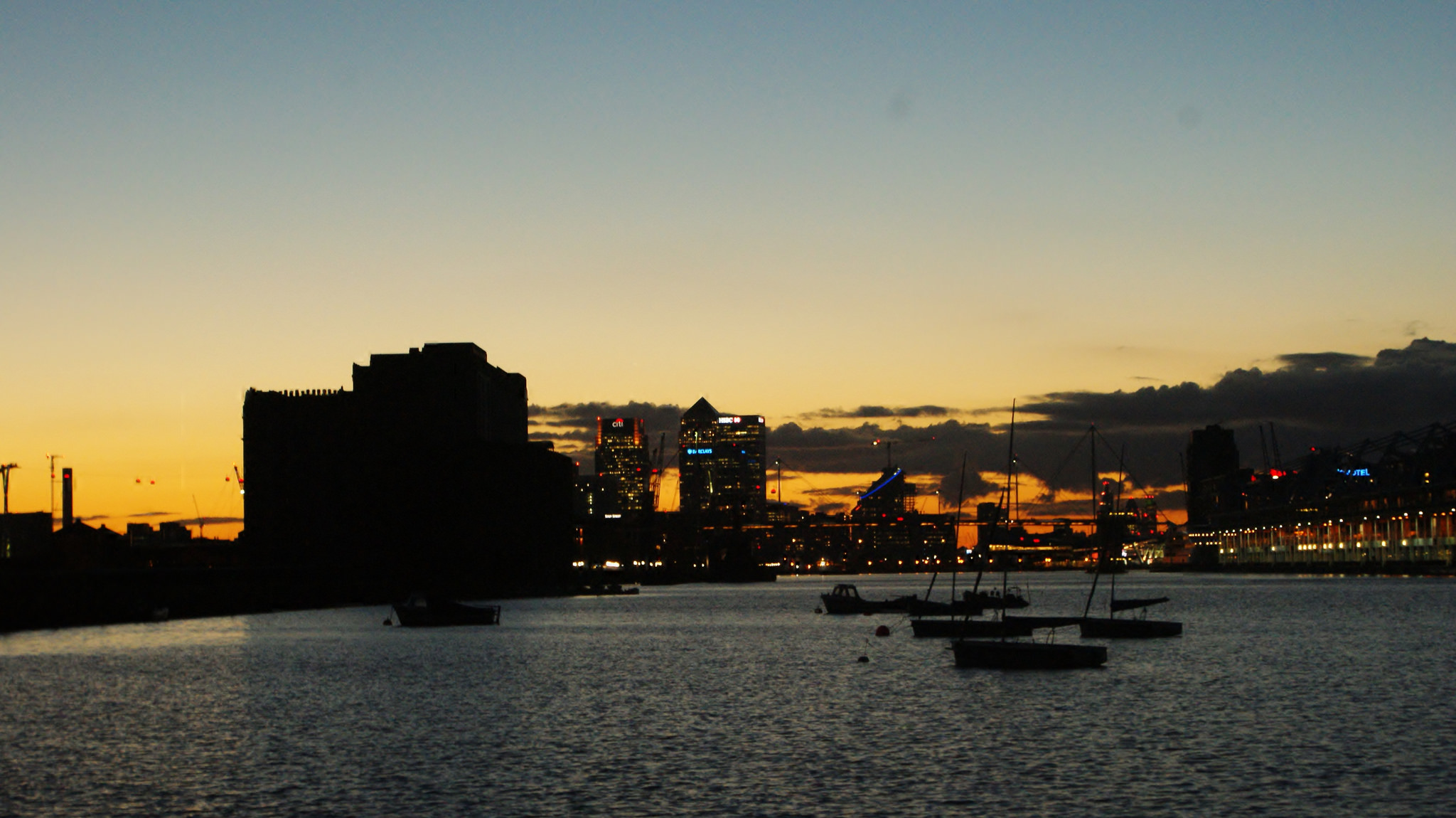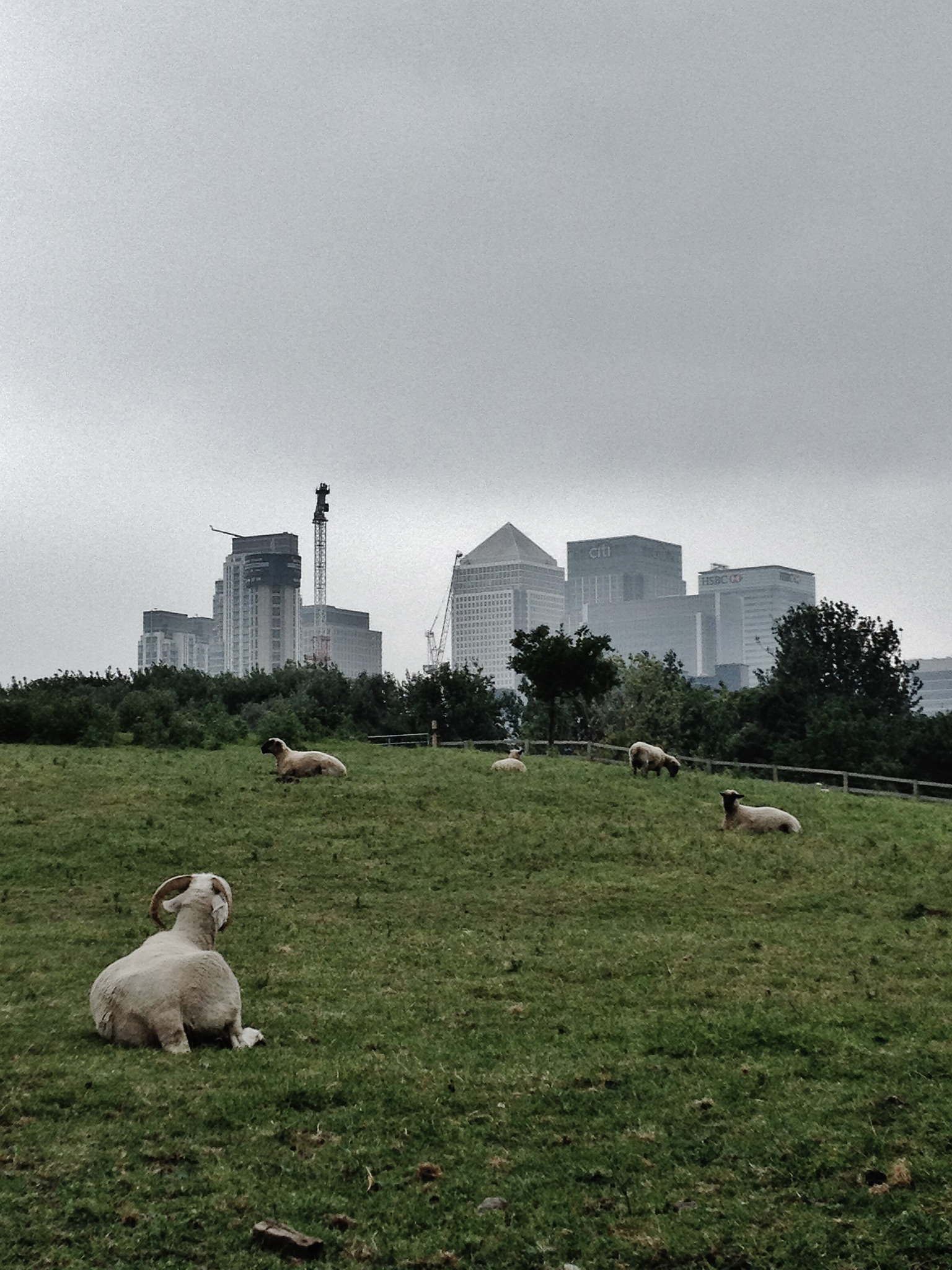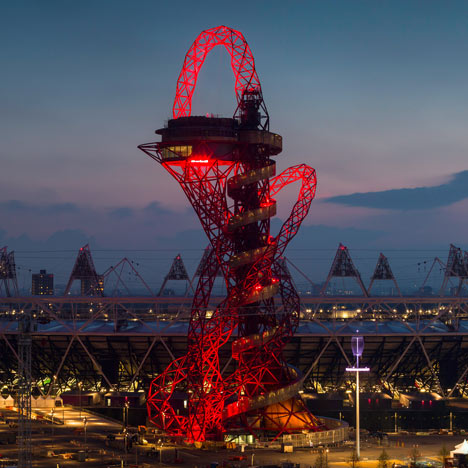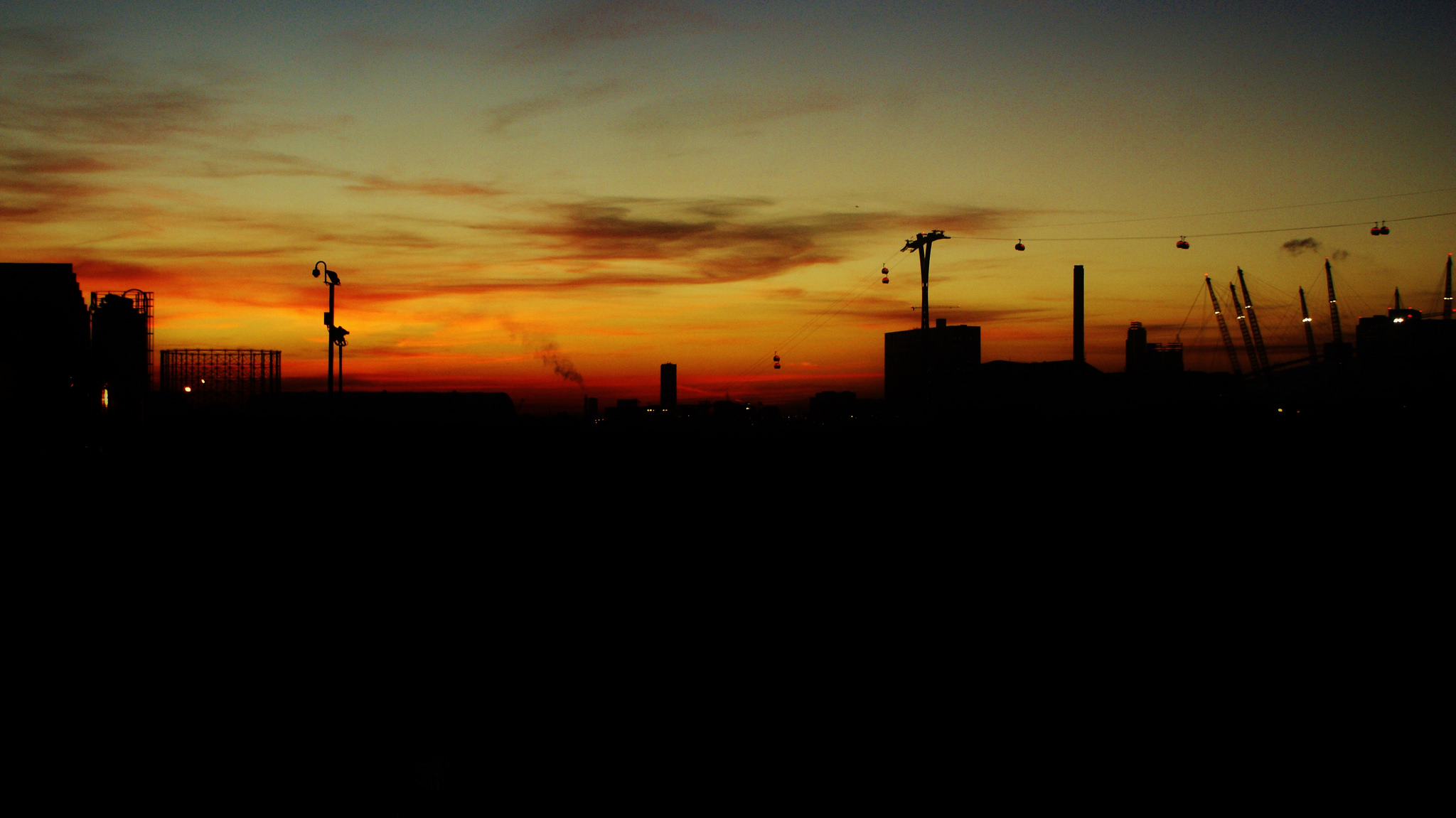Michell Soares Gonzales shuttles between the past, present and future of the Docklands Light Railway.
When travelling on the Docklands Light Railway (DLR), have you ever thought about the rails running beneath you – and they way they show where London is running to?
The DLR began life 27 years ago in 1987. The first lines ran from both Tower Gateway and Stratford to Island Gardens.
The current line now has 45 stations ranged over 40 km of track. The area of East London it covers stretches from Stratford in the north to Lewisham in the south; and from Bank to the west, all the way out east to previously isolated places such as Beckton and Woolwich Arsenal, north and south of the river, respectively.
One grey winter’s day, I took my camera out with me onto the line – just to see what I could see through the window.
From the front of a train out of Pontoon Dock on the way to Bank I watch the imposing summits of Canary Wharf coming towards me, as the track takes me further into new housing developments which are fast becoming part of the skyline.
From my window the rails look like steel veins, carrying money out from the old City to bring life to areas that were once neglected.
Then I arrive at the heart of the network, Canary Wharf, where triple platforms and walkthrough trains allow people to transfer easily (like money from bank accounts).
My train then moves slowly out of the station across a rail bridge and glass and steel buildings before leaving the open air and plunging like a rollercoaster down into the tunnel that the DLR then shares with its elder sibling – the London Underground.
I wait in the train until it begins its journey back east towards Beckton. This stretch is part of the extension that was built within three years of the DLR’s opening, and which eventually took it to Woolwich Arsenal, and later on to Lewisham, making clever use of an existing viaduct to travel under the river.
I enjoy the way the panorama sometimes mixes old and new. For example, at West Silvertown the crumbling old Millennium Mills building stands like a rib cage framed against the high tech ExCel structure. The way this building incorporates stretched fibre walls echoes both the architecture of the Dome across the river and the Arabic tents familiar to its owners, who are based in Abu Dhabi.
The range of different worlds that the DLR contains is extraordinary. For example the City Farm at Mudchute offers an escape from the stress of urban life. Horses, donkeys and cows chew the grass with the glass and steel peaks of the business district rising above them like a mountain range in Heidi books.
The line also brings together many different cultures that reflect the global economy on which the city feeds. The competitive nature of this economy is represented by the buildings that I can see competing to be the tallest. The pyramid on top of the iconic 1 Canada Square tower brings to mind the way the Egyptians used pyramids to show how powerful they were.
This demonstration of economic influence follows me to Stratford as my train brings me ever closer to the Olympic Park’s tallest landmark, the Olympic Tower. During the Olympics in 2012 this structure was lit up like a torch – representing the promise of East London’s rebirth.
But looking at its tangle of red metal now, it seems more like debris left over after the festivities came to an end. And what is less easy to see from the train are the people struggling and failing to become part of this economic dream: the homeless outside Stratford Station; the underpaid chuggers desperate for people to donate; and the musicians with their hats out playing for pennies and the odd pound.
Extending into the future
There are several plans to extend the DLR in the near future.
The extension from Beckton to Dagenham has already begun; and there are plans to strike further south towards Catford and Bromley.
Less likely are the proposed connections to King’s Cross St Pancras and Victoria. However if these plans were to come true, they would ease congestion on several of the busiest stretches of the Tube.
The DLR is clearly a vital asset to what is probably the fastest growing area of the capital. Its continued development and maintenance helps keep commuters earning, tourists spending, drivers working and locals meeting as their environment evolves and adapts to the pressures of an ever expanding city.
Michell Soares Gonzales is Rising East‘s Home and Employment Editor.

